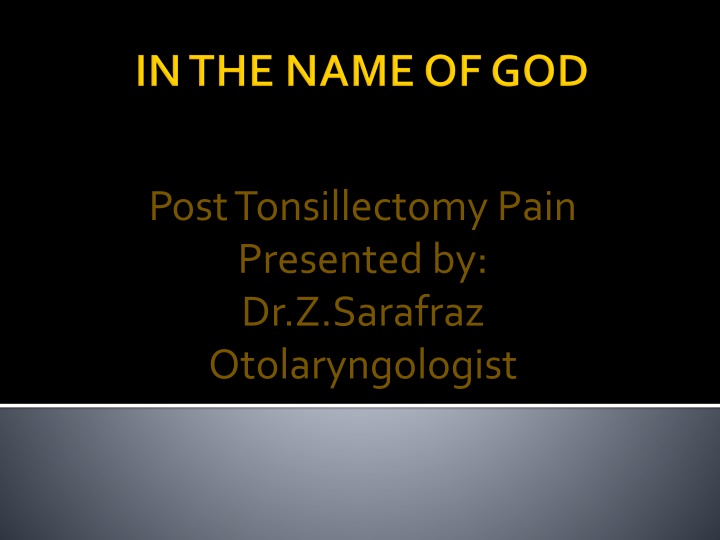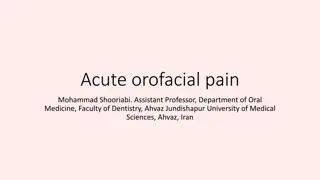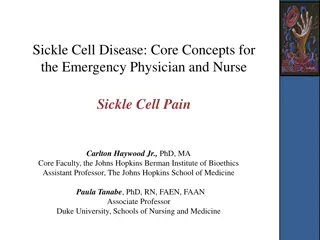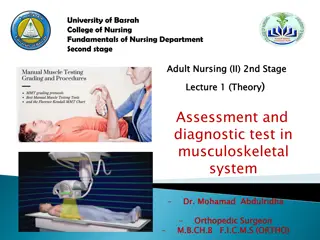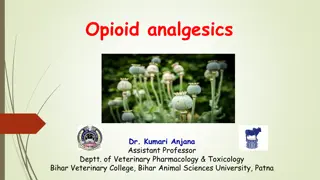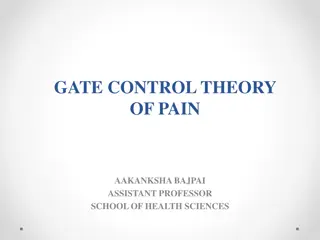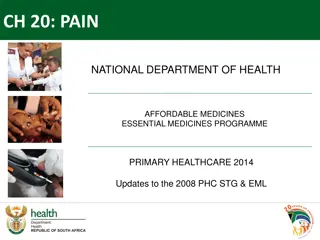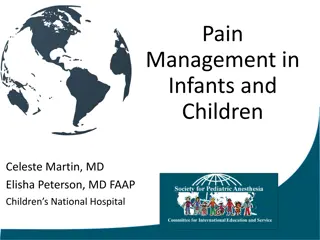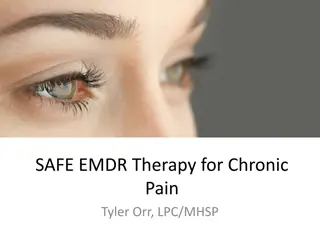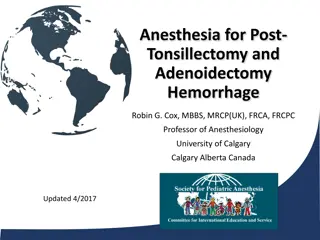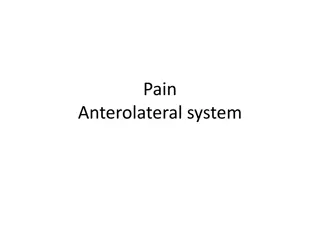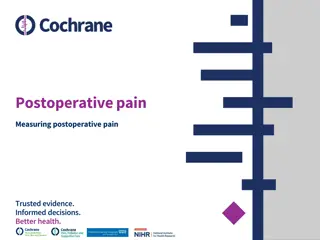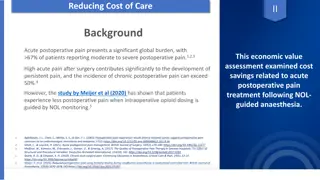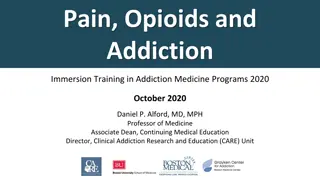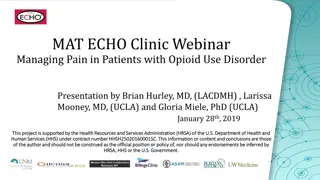Post-Tonsillectomy Pain Management
Post-tonsillectomy pain, duration, and severity factors, surgical techniques, potential complications, drugs for pain control, and efficacy of preoperative dexamethasone are discussed by Dr. Z. Sarafraz, Otolaryngologist.
Download Presentation

Please find below an Image/Link to download the presentation.
The content on the website is provided AS IS for your information and personal use only. It may not be sold, licensed, or shared on other websites without obtaining consent from the author.If you encounter any issues during the download, it is possible that the publisher has removed the file from their server.
You are allowed to download the files provided on this website for personal or commercial use, subject to the condition that they are used lawfully. All files are the property of their respective owners.
The content on the website is provided AS IS for your information and personal use only. It may not be sold, licensed, or shared on other websites without obtaining consent from the author.
E N D
Presentation Transcript
Post Tonsillectomy Pain Presented by: Dr.Z.Sarafraz Otolaryngologist
Tonsillectomy is a common surgery in children Post tonsillectomy pain is an important concern. Duration &severity of pain depend on: The surgical technique Antibiotic& corticosteroid use preemptive and postoperative pain management patient s perception of pain
sharp dissection Electrocauterization Lasers(KTP,CO2) Coblation microdebrider
Sharp dissection slightly less postoperative pain Electrocauteryless in intraoperative blood loss But more postoperative pain Sub total tonsillectomy less postoperative pain but more recurrence rate
Postoperative Hemorrhage Airway Obstruction and Pulmonary Edema VelopharyngealInsufficiency Nasopharyngeal Stenosis Cervical Spine Complications pain
There are many studies that investigated the control of post tonsillectomy pain using different drugs:
Pappas AL The effect of preoperative dexamethasone on the immediate and delayed postoperative morbidity in children undergoing adenotonsillectomy. Compared with placebo, dexamethasone significantly decreased the incidence of PONV in the 24 h after discharge, improved oral intake, decreased the frequency of parental phone calls, and resulted in no hospital returns for the management of PONV and/or poor oral intake.
Samarkandi AH Use of dexamethasone to reduce postoperative vomiting and pain after pediatric tonsillectomy procedures. Dexamethasone is considered safe and there was no adverse effects associated with a single dose of dexamethasone. Although the need for rescue antiemetic, time to oral intake and analgesia requirements in both groups were not significant, however, we found that dexamethasone does have antiemetic properties as overall incidence of retching and vomiting was significantly less in dexamethasone group as compared to control group in children who underwent tonsillectomy
Ugur MB The efficacy of intramuscular injection and peritonsillar infiltration of tramadol to prevent pain in children undergoing tonsillectomy. Peritonsillarinfiltration with tramadol provided good intraoperative analgesia, less postoperative pain on awakening and lower analgesic requirement within the first hour after surgery.
Intravenous and Peritonsillar Infiltration of Ketamine for Postoperative Pain after Adenotonsillectomy: A Randomized Placebo-Controlled Clinical Trial more effective in reducing the postoperative pain severity, need for analgesics and need for antiemetics.
Effect of dexamethasone on nausea, vomiting, and pain in pediatric tonsillectomy A single I.V. injection of DEX at the induction of anesthesia was effective in reducing the incidence of early and late PONV and the level of pain on the second postoperative day. A 0.15 mg/ kg DEX dose appeared to be as effective as a 0.5 mg /kg dose to reduce the incidence of PONV.
Assessing the effect of peritonsillar infiltration of ketamine and tramadol on post tonsillectomy pain and compare the side effects. Peritonsillarinfiltration of tramadol before operation decreased post tonsillectomy pain Without any hemodynamic instability, sedation, or hallucinations. Decreased analgesic consumption Decreased time to the beginning of oral liquid diet
Ketamine: cause hallucinations does not have the efficacy of tramadol in pain management & hemodynamic stabilization effects.
Aim To assess the effect of peritonsillar infiltration tramadoland parenteral dexamethasoneon post tonsillectomy pain, nausea and vomiting in children.
Dexamethasone: anti-emetic and anti- inflammatory Tramadol: opium agonist that mostly effects mu receptors in smaller extent kappa and sigma receptors Side effects: nausea, vomiting, dizziness sweating, anaphylactic reactions increased intra-cerebral pressure, lower the seizure threshold
6-12 years old children with elective tonsillectomy Recurrent tonsilitis Obstructive symptoms (snoring, open mouth breathing, sleep apnea)
Cardiovascular disease History of seizure Peritonsillarabscess Long operation time (more than 1 hour)
A double-blind randomized clinical trial 90 patients aged 6-12 years sharp dissection without electrical cutter sedation and pain scores at2, 4, 6, 8, and 12 hours (VAS & PONV scores) The patients were randomly divided into 3 groups : Dexamethasone Tramadol Placebo
randomized placebo-controlled clinical trial 3groups: Group(A) :was injected 0.5 mg/kg Dexamethasone Group( B): 2 mg tramadol Group (C): 2 cc NaCl injection site: bed and anterior fold of each tonsil (1 cc for each tonsil)blind by an anesthesiologist and ENT surgeon
variable Dexamethasone Tramadol placebo p Age Mean (age) 8.05 + 2.67 7.06 + 2.21 7.40 + 1.38 0.103 Sex (male percent) 57.10 66.70 40.02 0.061 Duration of anesthesia 54.29+ 10.96 51.67 +10.37 53.00 +14.6 0.553 Duration of Surgery (min) 42.14 +10.43 40.56 + 9.35 41.0 + 12.62 0.761
tramadol had significantly lower pain scores than other groups at all time points The time to first dose of analgesic request was longer in tramadol group than in the other two groups In our study, tramadol group had significantly shorter time to the first liquid uptake than dexa&placebo groups.
Dexamethasone group had significantly lower nausea and vomiting (P=0.001)
Pain following tonsillectomy is one of the most important complaints pain consequences : 1) as excessive use of analgesics 2) longer period of hospitalization 3) intolerance to diet, which can lead to nutritional problem 4) poorer quality of life
Peritonsillarinfiltration of tramadol before operation can decrease post tonsillectomy pain Without any hemodynamic instability, sedation, or hallucinations. Decrease analgesic consumption Decrease time to the beginning of oral liquid diet
Therefore, we recommend the use of tramadol for management of post tonsillectomy
gurMB, Yilmaz M, Altunkaya H, Cinar F, OzerY, BederL. Effect of Intramuscular and peritonsillarinjection of tramadol before tonsillectomy: a double blind randomized, placebo-controlled clinical trial. IntJ PediatrOtorhinolaryngol. 2008;72:241-8. ngelhardtT, Steel E, Johnston G, VeitchDY. Tramadol for pain relief in children undergoing tonsillectomy; a comparison with morphin.PaediatrAnaesth. 2003;13:249-52. al D, Celebi N, Elvan EG, CelikerV, AyparU. The efficacy of intravenous or peritonsillarinfiltration of ketamin for postoperative in children following adenotonsillectomy. PaediatrAnaesth. 2007;17:263-9. HonarmandA, Safavi MR, Jamshidi M. The preventative analgesic effect of preincisionalperitonsillarinfiltration of two low doses of ketamin for postoperative pain relief in children following adenotonsillectomy. A randomized, double-blind, placebo-controlled study. PaediatrAnaesth. 2008;18:508-14.
